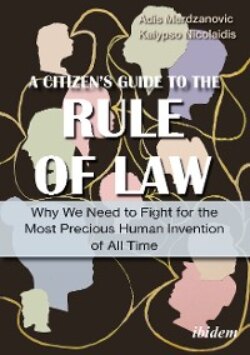Читать книгу A Citizen’s Guide to the Rule of Law - Kalypso Nicolaidis - Страница 16
Rule by Law and Rule of Law
ОглавлениеWhen we deal with the law, we usually find two prevailing schools of thought. There are those who say that the law is what is written in the law books. We call these scholars “legal positivists”. Their credo is simple: just follow the rules in the book.
But what if the rules contradict our deep sense of morality? What, for example, if the law in a country allows the government to imprison journalists for their critical reporting? Or what if the law allows a king to take a subject’s first-born so that it may become part of the ruler’s court? Legal positivists would have no problem with that, as long as proper procedures were followed.
This is where intuition helps after all. We intuitively know that this cannot be right. We know that, in such situations, the rule of law should be about protecting the journalist from governmental overreach and leaving the child in the caring hands of its family? Surely, the rule of law must be more than the positivist “rule by law”!
Come to think of it, our readers living in one of the future EU Member States might know the distinction we seek to explain better than us. In fact, many languages have recognised it, even if, unfortunately, English is not one of them. Maybe that’s something Shakespeare, after adding so many words to the English language, just didn’t have time to get around to do. It’s a pity, really.
In German or the languages of Slavic origin there is a semantic difference between the law in the books (in German Gesetz, or a variation of zakon in the Slavic languages) and the law as a principle of justice (Recht, or pravo). In the languages of the former Yugoslav space, for example, the translation of “rule of law” is usually given not as “vladavina zakona” (as in “rule by law”), but as “vladavina prava”, with “pravo” being semantically linked to the concept of justice (“pravda”) and literally meaning “right”.
To capture what the rule of law is, then, we need to move beyond the mere notion of a positivist, rule-by-law description and look at the norms at its very core. But what norms could that be? As so often in life, we need to find the love, in traditional and less traditional forms.
Examining with critical eyes the EU’s accession process can be helpful here, given that the rule of law does not figure alone in this picture. Ever since the spelling out of the criteria for membership in 1993, the EU has treated the rule of law as part of a triptych alongside democracy and human rights. Even if these dimensions can be treated separately in theory, we generally agree that it’s best to see the rule of law, democracy, and human rights as siblings when it comes to how they live in the real world. Different, but somehow of the same ilk. Treating them as distinct appears odd, even if, like any sibling, each one of them has of course a particular character.
Apart from being in line with many intellectual traditions, acknowledging that these three concepts are connected has a further benefit: it allows for assessing countries on a spectrum on which they don’t have to progress in lock-step. A country can advance on one, stay stagnant on another, and even deteriorate on the third.
Figure 1 How the Rule of Law, Human Rights, and Democracy intersect
This has in fact really happened. In the past decade, the countries of the Western Balkans have made significant progress on their path towards EU accession, yet they have also become more authoritarian and less democratic.9 And in all the accession countries, the human rights situation is far from perfect.10
We think that the best way of thinking of the rule of law, democracy, and human rights is to see them as separate, but interwoven elements of a family picture that we tend to recognise as “liberal democracy” (see Figure 1).
